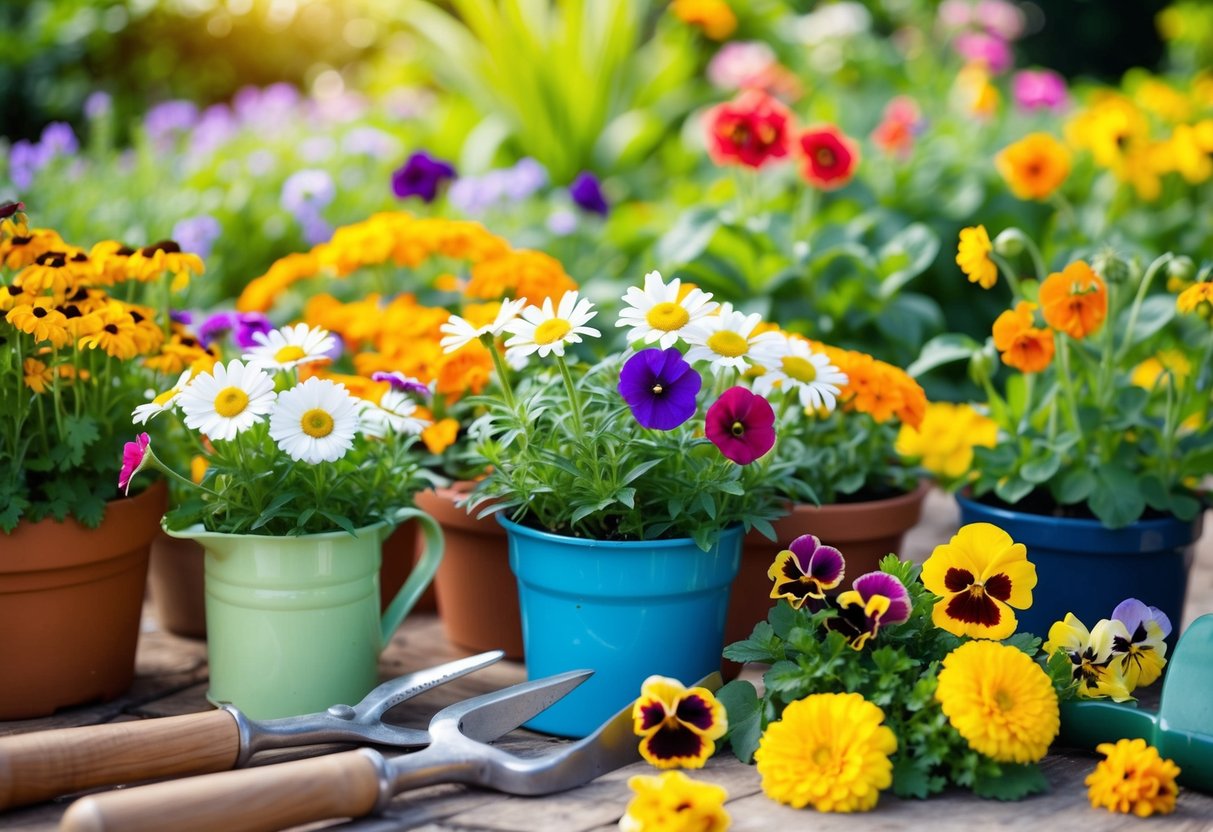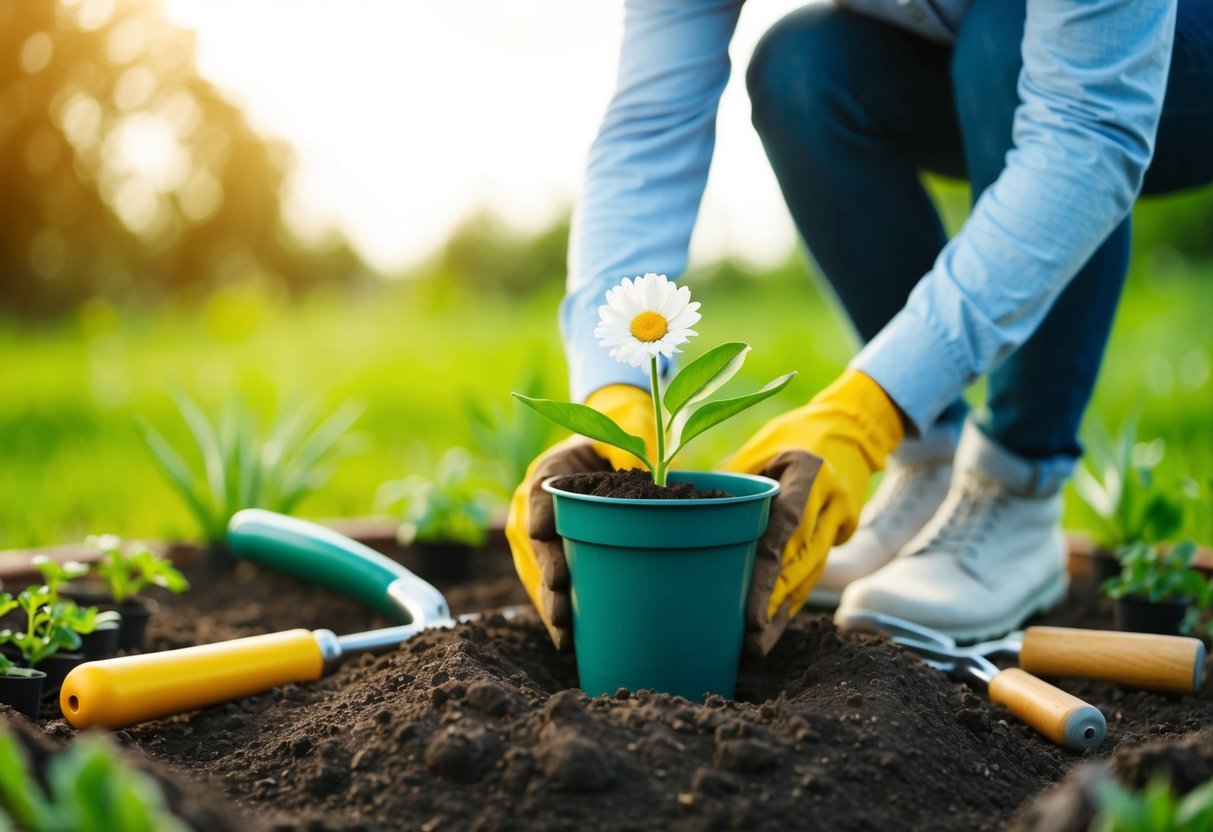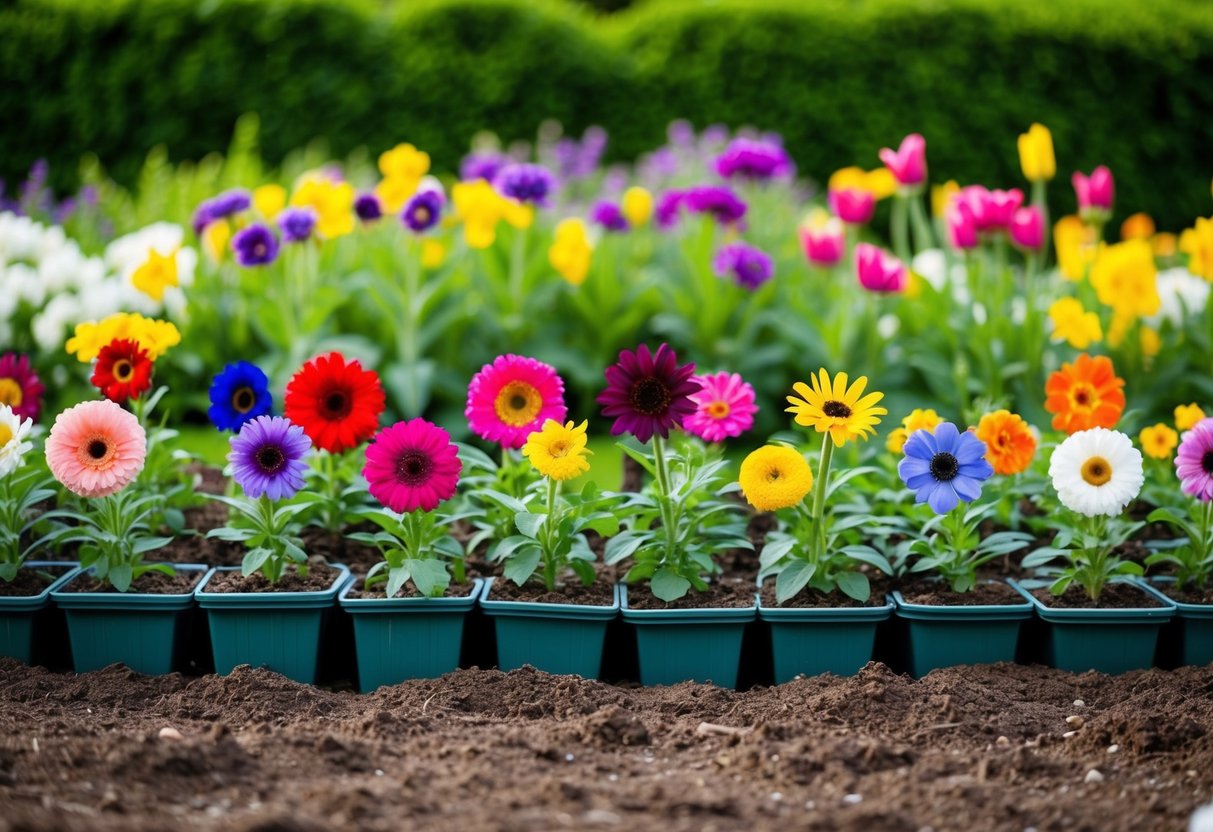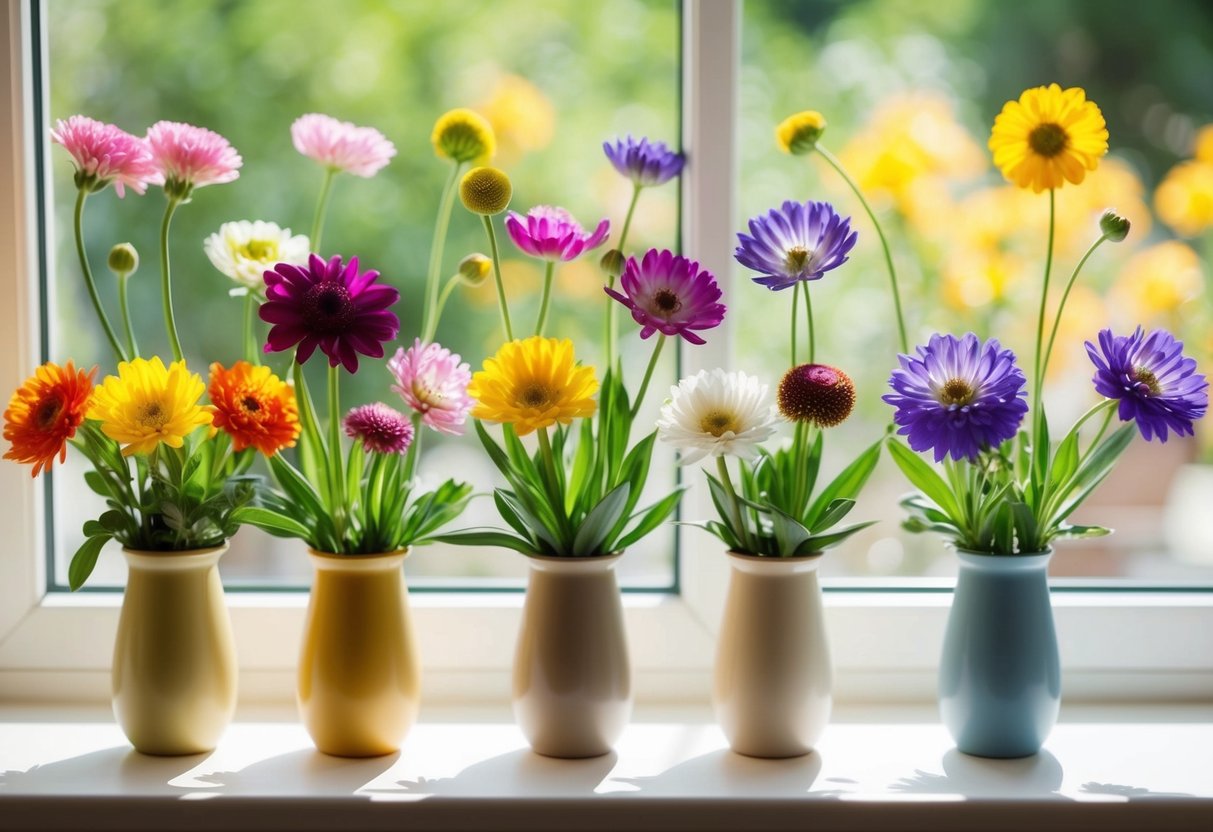What Flower is Best for Beginners? Easy Options to Start Gardening
Starting your journey as a beginner gardener can be fun and rewarding. If you’re looking to add some easy flowers to your garden, there are plenty of options that are both beautiful and simple to grow. Black-eyed Susans stand out as one of the best choices because they are easy to care for and bring vibrant color to your garden. These cheerful flowers can add a pop of bright yellow to your outdoor space, making them a favorite among new gardeners.

In addition to Black-eyed Susans, other easy flowers like Purple Coneflowers and Dianthus are perfect for novices. Purple Coneflowers, known for their durable blooms, can thrive with little effort. Dianthus, with its vibrant range of colors and pleasant clove-like scent, is another excellent choice for beginners. These flowers not only look good but also are resilient, which gives you a successful start in gardening.
Choosing the right flowers can set you on the path to becoming a confident gardener. When you plant these easy flowers, you’re more likely to enjoy the process and stick with gardening. The colorful blooms will brighten up your garden and boost your confidence as you learn the ins and outs of growing plants.
Choosing the Right Flowers for Beginners
When starting a garden, selecting the right flowers is crucial. Consider the light and soil conditions of your garden space. Understand which flowers thrive in full sun and which prefer shade. Also, identify the type of soil you have to ensure proper plant growth.
Assessing Sunlight and Shade
Observe how the sun moves over your garden throughout the day. Most flowers such as cosmos and marigolds thrive in full sun. These plants need about 6 to 8 hours of sunlight daily.
If your garden has shaded areas, consider shade-tolerant plants like hostas or fern. Shade-loving plants often prefer cooler conditions and do well with less direct sunlight.
Understanding where to place these plants in your garden helps them grow better. You can create a more vibrant garden by matching the right plants to the sun or shade conditions available.
Understanding Soil Types
Different flowers require specific soil conditions to thrive. Well-drained soil is key for many beginner-friendly plants. It keeps roots from getting too wet and prevents diseases. To test your soil, dig a small hole and fill it with water. If it drains within a couple of hours, your soil is well-drained.
If your soil isn’t well-draining, consider adding compost or sand to improve its texture. Drought-tolerant plants like succulents or lavender adapt well to different soil types and can survive with minimal water. Knowing your soil type helps you choose flowers that will flourish in your garden environment.
Top Easy-to-Grow Flowers for Starters

Growing flowers can be a rewarding hobby, especially when you choose types that are easy to care for. Some flowers bloom quickly and can fill your garden with color, while others provide lasting blooms year after year.
Annuals for Instant Color
Annuals grow fast and bloom in their first season, making them great for quick color. Marigolds are bright and cheerful, with shades of yellow and orange. They grow well in sunny spots and can even help with pest control by repelling insects. If you love bright, bold colors, try planting zinnias. These flowers come in various colors, require minimal care, and attract butterflies. You can also try snapdragons, which add vertical interest with their tall spikes of blooms.
Sunflowers are another excellent choice. They are not only easy to grow but also reach impressive heights, bringing drama to any garden. Cosmos are perfect if you like soft, feathery foliage and daisy-like blooms. They thrive in full sun and don’t need much water. For something different, consider nasturtiums. Known for their peppery taste, their flowers are also edible and can add beauty to both gardens and salads.
Perennials for Long-Term Blooms
Perennials are perfect if you want flowers that return each year. Pansies are a lovely choice, known for their sweet faces and wide variety of colors. They do well in cooler weather and can bring early spring color to your garden. Dianthus offers clove-scented blooms in pink, red, and white, giving a charming cottage garden feel.
Low-maintenance begonias are perfect for shaded areas. Their pretty blooms last all summer, making them a great option for long-term color. Impatiens are another shade-loving flower that provides bright, continuous blooms. If you enjoy a climbing plant, try morning glories. They showcase beautiful trumpet-shaped flowers that open with the morning sun, climbing fences or trellises effortlessly.
Planting and Basic Care

Getting started with flower gardening can be simple and rewarding. Understanding key aspects like watering, mulching, fertilization, and general maintenance helps ensure healthy and vibrant blooms. With the right care, even beginners can cultivate a thriving garden.
Watering Guidelines
Watering your flowers properly is crucial for their growth. Most flowers require about 1 inch of water per week, preferably in the early morning. This helps prevent evaporation and gives the plants time to absorb moisture.
Using a soaker hose is beneficial as it delivers water directly to the soil. This reduces water waste and keeps leaves dry, helping prevent fungal diseases. Make sure your flowers have well-draining soil to avoid waterlogged roots, which can lead to root rot.
Consider mulching around your flowers to retain moisture. This reduces the frequency of watering by slowing evaporation. Always check the soil moisture before watering. If the top inch of soil feels dry, it’s time to water again.
Mulching and Fertilization
Mulching is a simple way to conserve moisture and suppress weeds. Apply a 2-3 inch layer of organic mulch, like wood chips or shredded leaves, around your flowers. This not only retains moisture but also adds nutrients to the soil as it breaks down.
Fertilization is essential for flower growth. Use a balanced, slow-release fertilizer to provide consistent nutrients. Compost can be a great natural option that enriches soil health. Apply fertilizer in early spring and mid-summer, following package instructions for the best results.
Avoid over-fertilizing as it can harm your plants. If you’re unsure, conduct a soil test to determine nutrient needs. Understanding your soil’s specific requirements ensures you provide the right balance of nutrients, leading to healthier flowering.
Pruning and Maintenance
Regular pruning maintains plant health and encourages more blooms. Deadhead flowers as they fade to promote new growth. This also helps prevent the plant from going to seed, directing energy back into flowering.
For perennials, cut back old growth in early spring to allow new shoots to emerge. Removing damaged or diseased parts prevents spread and keeps the plant vigorous. Keep an eye out for pests; hand-pick or hose them off if necessary.
Conduct regular inspections to catch issues early, maintaining your garden’s overall health. Basic maintenance, like keeping beds weed-free and ensuring good air circulation, supports thriving floral displays. Simple actions like these can lead to a more rewarding flower gardening experience.
Designing Your First Flower Bed

When creating your first flower bed, think about plant arrangements for visual appeal and sustainability. Consider flowering plants like coneflowers, lavender, and black-eyed susan to attract pollinators and add beauty to your garden.
Arranging Plants Aesthetically
Start by choosing plants that come in different heights, colors, and textures. Coneflowers, salvia, and sedum offer diverse forms and vibrant colors that can add interest. Position taller plants like blazing star at the back, while shorter flowers such as catmint can sit in the front.
Using odd numbers, like planting in groups of three or five, often looks more natural. Contrast plants with varied foliage to enhance appeal. A layout with layers not only grabs attention but also ensures each plant is visible and gets enough sunlight.
Creating a Pollinator-Friendly Garden
Plant selection is key to attracting bees and butterflies. Black-eyed susan, yarrow, and lavender are favorites among pollinators. Group these flowers together to make it easier for pollinators to find them.
Choose plants that bloom at different times throughout the growing season to provide consistent food sources. Consider adding a small water feature or shallow dish with water; pollinators need water as well. By creating varied habitats, like adding rocks or logs, you invite more beneficial insects and ensure a thriving garden ecosystem.
Tips for Long-Lasting Flower Displays

Creating a stunning flower display requires both the right choice of flowers and proper care techniques. When aiming for lasting beauty, focus on selecting blooms known for their durability and provide them with ideal conditions.
Selection for Extended Blooms
Choosing flowers that naturally last longer is key. Sunflowers and dahlias shine in this area with their robust structures, offering vibrant displays for up to 10 days. Peonies and daffodils are also great, each providing a lasting splash of color. Echinacea purpurea and baptisia are excellent choices for those who enjoy unique shapes and longevity. These flowers have a reputation for resilience, making them ideal for beginners.
By starting with these varieties, you ensure a longer period of enjoyment from your arrangements. Mix and match these blooms to enhance both variety and lifespan, ensuring your display remains lovely for as long as possible. Proper selection is your first step towards a displays that truly lasts.
Maximizing Vase Life for Cut Flowers
Once you’ve chosen the best flowers, it’s crucial to maximize their vase life. Begin by trimming stems at a diagonal to increase water absorption. This small step can make a big difference in how long your flowers stay fresh.
Replace water every 1-2 days, keeping it clean and adding flower food if available. Keeping the vase in a spot with indirect sunlight will also help. Avoid placing your flowers near ripening fruits, as the ethylene gas they emit can shorten your blooms’ lifespan.
By maintaining a clean environment for your flowers and cutting their stems properly, you help extend their life in your home. These simple steps are key to enjoying vibrant displays for days on end.







